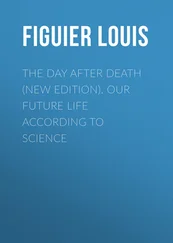Streptomycin was not the only medical advance that became available. In the twenty-first century it is easily forgotten that the NHS has always had to absorb such costs to survive. In the service’s first eighteen months other new antibiotics became available. So did tubocurarine, the muscle relaxant still in use today which rapidly widened the types of surgery which could be performed. Pernicious anaemia became treatable for the first time, new prophylactics became available for diptheria, while cortisone, the first effective treatment for rheumatoid arthritis, was discovered. Many of these new treatments were both scarce and horrendously expensive. It was evidently impossible instantly to ‘universalise the best’. It was, however, possible rationally to extend it by limiting the new treatments initially to specialist centres before falling prices allowed their more general use: the NHS’s first – and perennial – answer to the rationing issue.
The result of vast unmet need and recent medical advance was an almost instant example of one of the NHS’s recurring preoccupations – an expenditure crisis. Bevan himself within eighteen months was admitting: ‘I shudder to think of the ceaseless cascade of medicine which is pouring down British throats at the present time.’ 13
He had been aware of the unpredictability of the costs in advance, telling Dalton it would take a full year’s experience to know them – although he did suggest, falsely as it turned out, that the high early costs would fall as the backlog of disease was treated. He had also foreseen – and taken pride in – something which all health ministers should take to heart, but by which many have been beaten down. ‘We never shall have all we need,’ he had declared. ‘Expectation will always exceed capacity.’ 14In addition, ‘the service must always be changing, growing and improving; it must always appear inadequate’. And he recognised the impact to come of the nationalised structure, with appointed boards for whom he, as the Minister of Health, was answerable to Parliament. The House of Commons order paper would be covered with questions. ‘Every mistake which you make, I shall bleed for,’ he told the Royal College of Nursing a month before the service was launched. ‘I shall be going about like Saint Sebastian, bleeding from a thousand javelins … all I shall be is a central receiver of complaints.’ 15
But the appointed day was not just for the NHS. It was also the start of modern social security. Beveridge’s report finally came into effect.
Its very first fruits had ripened before Labour came to power. In May 1944 the government won its ‘White Paper race’ with Beveridge to produce Command 6527, the coalition White Paper on Employment Policy. Beveridge was miffed at the government’s refusal to commission it from him, and at the refusal to let civil servants help with his own ‘private enterprise’ effort, Full Employment in a Free Society. He nevertheless described the Government White Paper as ‘epoch-making’ and ‘a milestone in economic and political history’, though he remained critical of some of the tools it proposed to use to maintain full employment. 16
The White Paper dripped with the influence of Keynes. In Beveridge’s words, it dismissed the Treasury’s great ‘economic fallacy’ of the 1920s and 1930s which had been succinctly defined by Churchill in his 1929 Budget speech as the world crashed into the Great Depression. ‘It is the orthodox Treasury dogma steadfastly held,’ Churchill told the Commons then, ‘that, whatever might be the political and social advantages, very little additional employment can, in fact, and as a general rule, be created by State borrowing and State expenditure.’ Beveridge commented: ‘By the renewed experience of full employment [that dogma] has been consumed in the fires of war, and the White Paper may be regarded as a ceremonial scattering of the ashes.’ It was to be another thirty years before, phoenixlike, it rose again, reincarnated as monetarism.
The White Paper’s crucial sentences were that the government accepted ‘as one of their primary aims and responsibilities, the maintenance of a high and stable level of employment after the war … Total expenditure on goods and services must be prevented from falling to a level where general unemployment appears.’ No precise definition of ‘high and stable’ was given. Indeed the only time full employment has been defined by a British government was in 1951 when Hugh Gaitskell, the Labour Chancellor, told the United Nations that Labour’s definition was ‘a level of unemployment of 3 per cent at the seasonal peak’.17 This was slightly lower than Beveridge’s 1944 figure of 3 per cent jobless on average. (Unemployment has natural fluctuations, for example when school leavers reach the job market or winter weather hits the construction industry.) But the difference proved academic. The bad winter of 1963 aside, it was to be the 1970s before unemployment rose above 3 per cent at all and between 1945 and 1970 it averaged little more than half that – 1.8 per cent. The one great exception was in the awesome winter of 1947. Then, during the Great Freeze, with bread rationed (something that had been necessary in neither World War), the meat ration cut, and stockpiled coal frozen so solid it could not be moved, unemployment briefly hit 2,000,000. ‘Shiver with Shinwell and Starve with Strachey’ the newspapers proclaimed, pillorying the ministers of fuel and agriculture. 18
The vital Keynesian tool for achieving full employment was demand management: ‘a policy for maintaining total expenditure’. During recessions the government would spend on ‘the permanent equipment of society’; in essence it would invest in public works and publicly funded projects while attempting to influence private capital investment and expenditure by raising and lowering interest rates.
Full employment was already a reality in 1948 and would remain so for a quarter of a century. Family allowances, another part of the Beveridge plan, had also been enacted under the Conservative Minister Leslie Hore-Belisha (who as Minister of Transport had given his name to the Belisha beacons which adorn zebra crossings). With Labour’s victory, Jim Griffiths, the MP who had divided the Commons over the coalition government’s weak-kneed commitment to the Beveridge report in 1943, took over the recently created Ministry of National Insurance’s small but palatial accommodation at 6 Carlton House Terrace. Griffiths, a man with ‘all the Welsh eloquence of Bevan without the egotism’ according to Douglas Jay, 19had become a social security expert, 20recording that for Labour the Beveridge report had fallen ‘like manna from heaven’. He felt it entirely suitable and ‘symbolic’ that social security for all was to be run from a building ‘once the citadel of aristocratic power’. He arrived to find Hore-Belisha in tears at the loss of the chance to implement the plan more fully. ‘This is the end of my career,’ he told Griffiths. 21
It was to take three Acts of Parliament on top of the existing Family Allowances Act to implement the social security side of the Beveridge plan. Griffiths’s first job was to find the money to start paying out family allowances. ‘I made the first of many visits to the Treasury. The Chancellor, Hugh Dalton, gave me the money “with a song in his heart”, as he told our [party] conference to the delight of our supporters and the fury of his critics.’ 22The mercurial Dalton rapidly proved one of the welfare state’s firmest backers. It was he who at about the same time was agreeing with Bevan that the NHS should ideally be both overwhelmingly tax-funded and comprehensive from the start, not introduced piecemeal. ‘After Bevan, Dalton was the chief architect of the NHS,’ Michael Foot, no friend of Dalton politically, judged. 23His support, together with big increases in subsidy for Bevan’s council house programme, came despite the appalling financial situation Labour inherited. President Truman, overnight, had cancelled the Lend-Lease which had sustained Britain through the war. Only the United States’ agreement, after months of difficult negotiation in late 1945, to a deferred $3.5 billion loan repayable over fifty years from 1951 made the welfare state possible. Without it, services would almost certainly have been cut, not developed. 24
Читать дальше
![Nicholas Timmins The Five Giants [New Edition]: A Biography of the Welfare State обложка книги](/books/701739/nicholas-timmins-the-five-giants-new-edition-a-cover.webp)











